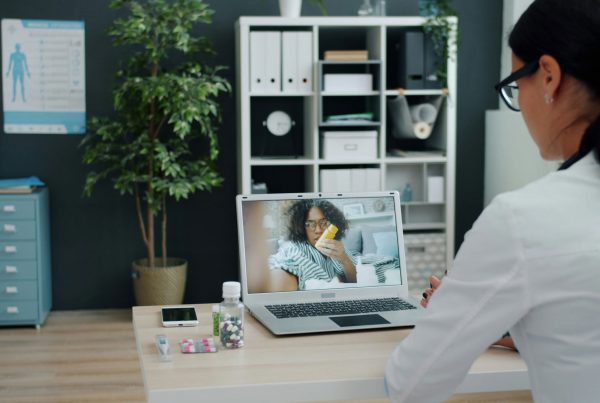In our modern society, connecting with other people has never been easier thanks to technology and social media. Without our phones and laptops, many of us would not be able to do our jobs properly or get our education. Today, you can answer Zoom work meetings from the comfort of your bedroom, return a quick Slack message in the grocery store line, and FaceTime your grandma while you’re making dinner. Before this age of technology, we have never been able to multitask our work and personal relationships to such a degree. But now that we are so ‘reachable’ on our technology, many of us feel obligated to respond to every call, every text, and every notification we get — even if we are off the clock. Many people have come to rely on their phones as an extension of themselves, and our dependence on these devices has blurred boundary lines and created unhealthy relationships with technology that we should all be more mindful about.
What are boundaries?
Personal boundaries are the limits and rules that we set for ourselves to help us feel safe and comfortable in our relationships. Setting healthy boundaries helps us say “no” or “yes” to things when we want to. When setting boundaries with loved ones or coworkers, individuals can vocalize their feelings and create expectations for the other person. Unfortunately, when it comes to technology, it can be difficult to set healthy boundaries because we can’t politely ask our phones to stop taking up so much of our time and expect anything to happen. The boundaries that we set with technology are resolutions that we create and stick to ourselves, and this is no easy task. A study in 2020 showed that 71% of people sleep with their phones in their hands or have them close by when they sleep. That’s a lot of people dependent on their cellphones! In order to build healthy boundaries with our technology, it’s important to understand what the three different types of boundaries are.
Porous Boundaries
Porous boundaries are the weakest set of boundaries. Individuals with porous boundaries are overly involved with other people, poorly express their limits and expectations, and can become highly dependent on the opinions of others. In the case of technology, people with porous boundaries struggle to create or maintain boundaries against how they use their technology and how much time they spend using their technology. For example, an individual with porous technology boundaries might:
- Spend hours scrolling through social media
- Wake up and immediately reach for the phone before getting out of bed
- Ignore other people in face-to-face conversations to use their phone
- Answer work emails after 5pm
- Stay up late to watch TV night after night and be too tired to work the next day
- Feel anxious or upset if they do not answer every text or call right away
- Use their technology as a distraction from responsibilities
- Answer calls even when they are busy with something else
- Follow social media accounts that make them feel bad, envious, insecure
- Use technology as their only means of entertainment or hobby
Rigid Boundaries
Rigid boundaries are the strictest, most intense type of boundaries. Individuals with rigid boundaries tend to build their walls up completely and may seem detached or avoidant of others. In terms of technology use, individuals with rigid boundaries are inflexible and unwilling to use technology, even when it may be beneficial to do so. These people may be “off the grid” and impossible to contact if they are completely unwilling to use technology even when their work or personal life might call for it. For example, a person with rigid boundaries might:
- Ignore all incoming calls or texts
- Never get back to people trying to contact them
- Delete all social media to cut friends and family off
- Leave their phone at home all day even when their loved ones might wonder where they are
- Create a schedule for when others can call or text and are inflexible to responding at other times of day
- Refuse to get a phone or laptop because they do not want to get close to anyone
Healthy Boundaries
Healthy boundaries are exactly what they sound like — healthy. People with healthy boundaries are able to gauge their personal wants and needs, and can communicate these things with the people around them. They are able to say “yes” and “no” to things when they want to, and do not compromise their own values for the sake of other people. In terms of technology, individuals with healthy boundaries are able to use their gadgets an appropriate amount of time and can put their phones and laptops down when other life responsibilities come up. They do not feel as though their phone rules their life, and can enjoy a healthy amount of screen time that is not debilitating. For example, a person with healthy boundaries might:
- Have a time limit on how much time they spend on social media everyday
- Unfollow or mute friends, family, and creators that make them anxious or envious
- Have hobbies that do not involve technology
- Able to self-regulate how much they use their phone
- Log off completely from work when they clock out (do not check emails or messages)
- Decline calls or ignore texts for another time if they are busy at the moment
- Be present when speaking face-to-face with other people
- Have a morning or evening routine that does not involve checking their phone
- Keep their phone, laptop, or TV out of the bedroom
- Be able to go a few hours or days without feeling like they have to check social media
How to Set Boundaries
Setting boundaries with our technology might not sound very appealing, but in this day and age it is becoming more and more necessary when so much of our lives are spent online. With more than 80% of Americans owning smartphones and 47% considering themselves “addicted” to their phones, the intentional effort to create healthy boundaries with technology is something everyone should try and implement.
Here are some easy ways to begin setting boundaries with technology:
- Check your screen time. It can be very uncomfortable to confront yourself about how much time you actually spend on your phone. When we scroll on Instagram or TikTok, the minutes (or hours) can fly by, and we don’t even realize how much time we’ve spent on the apps. Checking your screen time is a hard, yet effective way to be honest with yourself about how much you use your technology. Knowing the truth about your usage can inform your next step in setting boundaries.
- Be mindful about how you’re using your technology. Research has shown that nearly 36.2 million Americans will be working remotely by 2025. That means that around 1 in 4 Americans need to balance their phone and laptop usage between work and personal use. Right now, many individuals working remotely struggle with shutting off from work mode when it comes time to clock out. With our email inbox right next to all our social media apps, it can be tempting to check our email and look at tomorrow’s work when our phones make it so accessible to us. Forcing yourself to give yourself a break from work when you are off the clock is an important boundary we must take seriously.
- Stay off social media when you need to work. Just as we should be able to shut off from work when the day is done, we should also be able to focus on work when we are clocked in. Research shows that the average employee will spend almost 8 hours per workweek doing non work-related activities on their cell phones, and this can lead to a loss of productivity and focus. Knowing when to set boundaries with yourself about working when you need to work and relaxing when you need to relax can help you become a less technology-dependent, more effective worker.
- Don’t use your phone as an alarm clock. Most of us use our cell phones as a convenient alarm clock to wake up in the morning. While it is nice to have your device serve this function for you, it can also be an issue for those who are trying to use their phone less. Having to pick up the phone first thing in the morning encourages us to check all our missed notifications and social media updates from when we were asleep. Instead, using an actual alarm clock to wake you up will discourage you from using your phone first thing in the morning. This allows you to leave your device in another room at night, and you will be able to create a morning routine that does not suck you into the online space so early in the day.
- Remind yourself that they can wait! The world will keep spinning and the office will keep running even if you don’t answer that work email at 7:30pm. Your friend will not hate you if you don’t respond to their text right away because you are out eating dinner with your boyfriend. It can feel like we are being ‘rude’ if we are not available on our devices 24/7, but setting healthy boundaries with our technology is crucial for maintaining our psychological and emotional well being. In the long run, this is not only beneficial for us, but for everyone around us as well.







